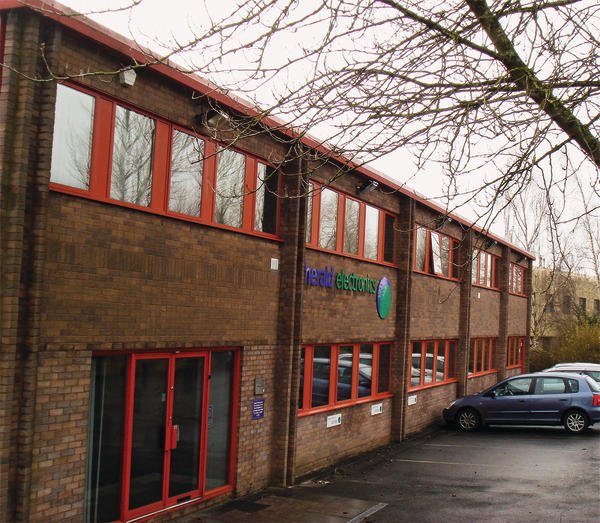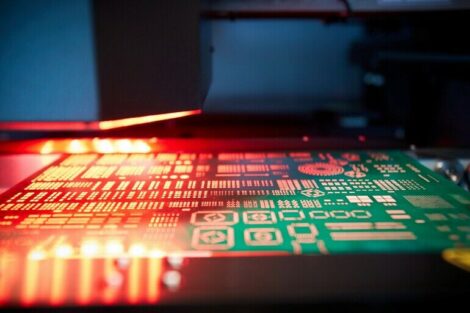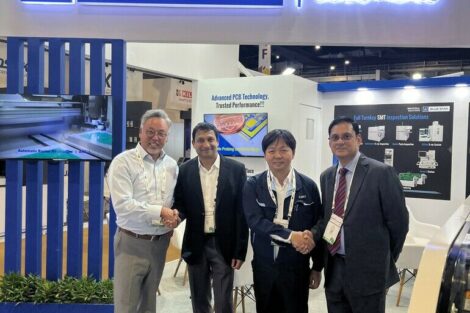Throughout the last 24 years Herald Electronics Ltd. developed in to a leading provider of electronic manufacturing services and has formed many partnerships with more than 30 companies across a wide range of business sectors. Work force stability, length of service and engineering experience has crystallised to give the company several key advantages: Herald’s engineers advise and assist their customers to develop high-quality product, a service that is very much appreciated by up-and-coming enterprises. Furthermore, the Company’s product testing skills and resources give a high level of quality assurance especially for safety critical parts and embedded technology.
Göpel electronic, Jena (Germany)
Herald is often referred to as a small ‘large company’. Because it is relatively small, has a flat management structure and inbuilt capabilities the company is quick to respond to clients with the technical and engineering self-confidence of a large company. By exploiting that advantage the EMS provider has created a company that can “build in customer advantage”, says Sales Manager Steve Henderson, adding: “we have fashioned our resources to produce a best in class manufacturing facility with robust process controls and a well-trained and motivated workforce that provides a seamless extension to the customers own quality process.”
Required quality
From the very beginning the company concentrated on utilising test methods most customers demanded, such as manual optical inspection, functional test or employing MDA. In times when board complexity was not that high, there was no need to consider alternative test techniques. But times have changed and today’s boards within excess of 1,200 components required a review of manufacturing strategy.
Utilising manual inspection couldn’t guarantee the required quality due to obvious disadvantages compared to an automated inspection system. Hence, Herald decided on an AOI scanner system, which was used as a first-off inspection machine. It helped by checking component values and positions, but not for solder joint inspection. The test procedure implied that captured images were compared to the paper work component plan, which resulted in relatively high inspection times. But as more and more small components down to 0402 size found their way onto Herald’s boards, and consequently couldn’t be inspected by the scanner system.
The manufacturing and test engineers realised that the best solution would be a fully Automated Optical Inspection system. In 2008/2009, they spent several months investigating the respective market and examined various AOI vendors in detail. All in all, seven AOI suppliers were investigated, whereby “each of them had advantages and disadvantages”, says Mark Webb, Engineering Manager at the company.
Pick-and-place machine manufacturer Mydata, whose systems were comprehensively utilised in the production lines, suggested Göpel electronic, a German company that recently had entered the UK market and opened a subsidiary near Cambridge. Finally, the decision was made in favour of this enterprise, as they “had most advantages”, explains Mark Webb.
Ease of programming and unlimited opportunities in upgrading the system at any later point in time were critical reasons for Göpel electronic’s AOI system. The main reason, however, was high level of fault detection in particular for fine-pitch, which couldn’t be tested before. Various illumination variants combined with additional inspection functions increase fault coverage at minimal false-call rate.
Herald decided on the OptiCon BasicLine AOI system, a stand-alone solution that has been meeting the company’s demands for repeatability and flexibility. There are four production lines in the facility in Radstock, near Bath in Western England. The AOI system is utilised to purely inspect SMD component boards from all four lines.
AOI system ensures high quality
Mark Webb tells a story, which “proved us right to decide on the Göpel electronic system”.
A customer sent a PCB to Herald for programming purposes that had been manufactured by another company. It was a board for a new GPS systems that can also be used as a PC linked to the internet by WiFi. The board had been inspected before and said to be good. The test engineers checked it once more with the OptiCon BasicLine and surprisingly found some faults, e.g. shorts, opens and a lifted lead.
Another application example concerns the inspection of Ball Grid Array devices (BGA’s). Although co-planarity checks made before purchasing the inspection system were passing, the final functional test reported a high failure rate. Hence, the boards were sent out for an external X-ray inspection, which also reported no faults. After tightening up the co-planarity tests with the OptiCon BasicLine the failures were detected. Herald found out that the BGA’s varied in height, and 20 of 500 BGA’s had different ball sizes, i.e. the balls didn’t touch the board. The AOI system was used to measure the distance from the PCB and the centre of the respective BGA to check the device had been correctly soldered. “The failure rate dropped considerably after using the BasicLine system for finding the defects”, tells Mark Webb.
In this case, Herald also got help from the Göpel electronic support team in the UK. Phil Webber, application engineer for AOI systems was of “great help”, says Mark Webb. Furthermore, the company is “very satisfied with training and support” whenever needed, he concludes, adding: “They are always available, and phone back quickly if not”.
High quality products are the trademark of Herald Electronics Ltd., assured by a high-quality AOI system made in Germany. And the story continues …
www.goepel.com; www.herald-electronics.com
ZUSAMMENFASSUNG
Nachdem die Bauteile immer kleiner werden, musste der britische EMS-Dienstleister Herald Electronics in ein neues Inspektionssystem investieren, um weiterhin beste Qualität gewährleisten zu können. Die Entscheidung fiel auf das AOI-System OptiCon BasicLine von Göpel electronic.
Suite à la constante miniaturisation des éléments, le prestataire EMS britannique, Herald Electronics, a dû investir dans un nouveau système d’inspection pour pouvoir continuer à garantir la meilleure qualité possible. La décision s’est portée sur le système AOI OptiCon BasicLine de Göpel electronic.
Share:












